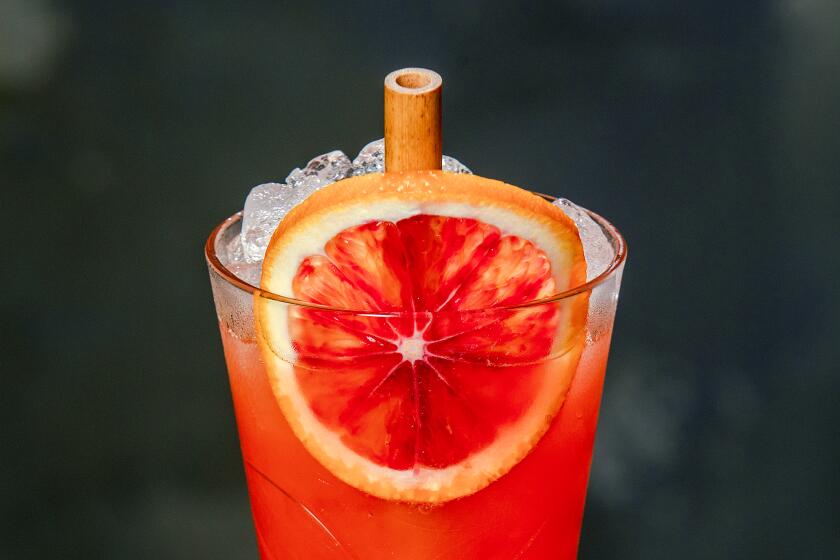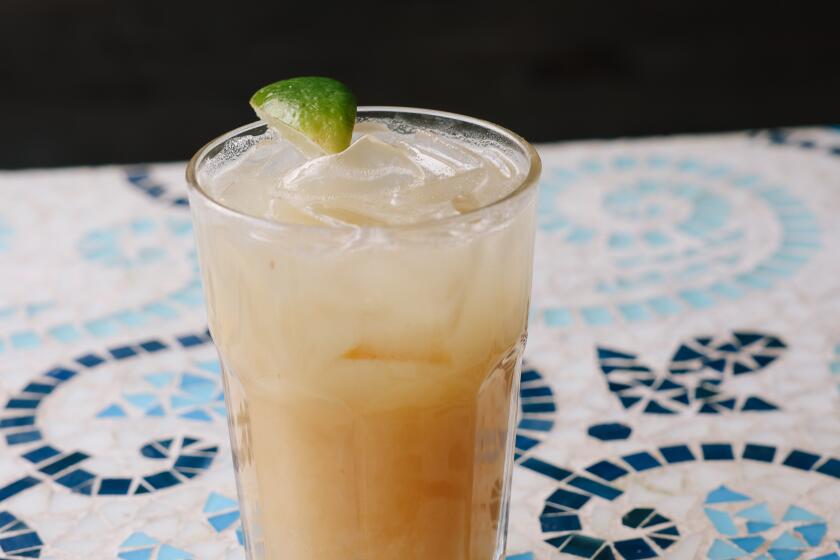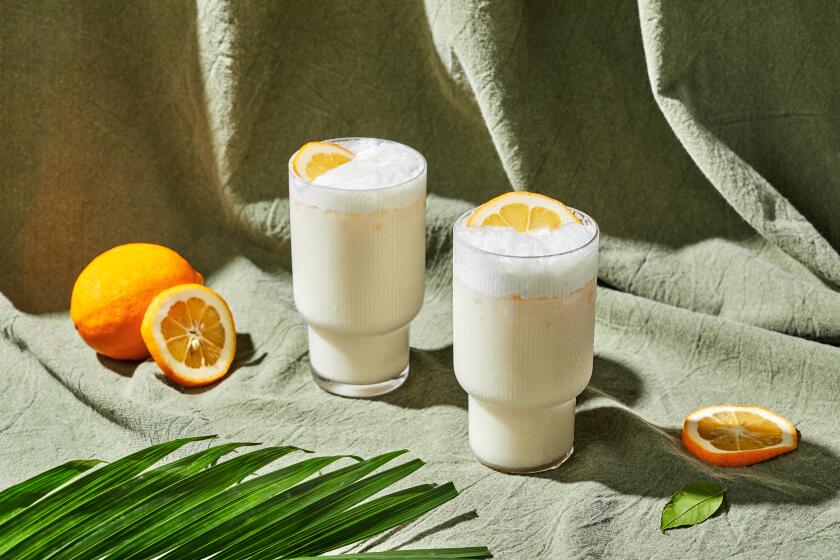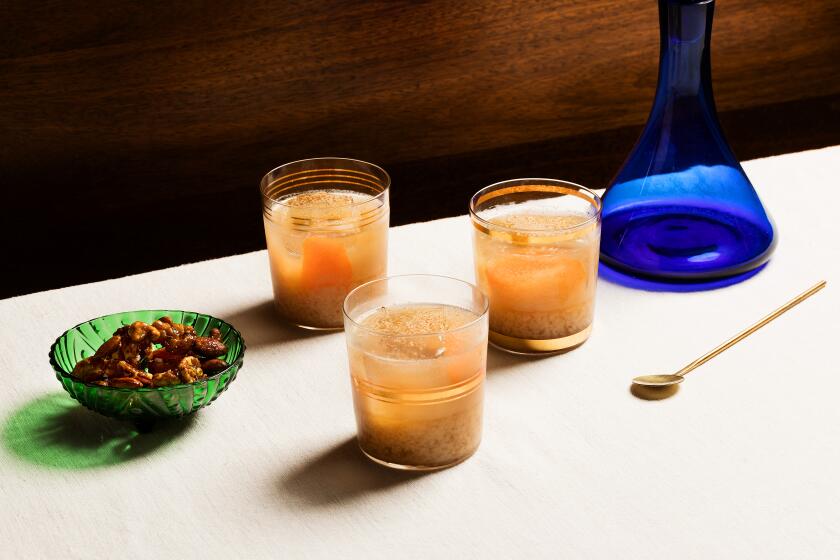Classic margarita

Tequila used to be the bad boy of spirits, a rough tipple to be indulged in indiscriminately and regretted the morning after. Today, tequila has gone into rehab and emerged as a suave, cultivated customer, wearing some pretty fancy packaging and at ease in our finest watering holes. Restaurant bars and liquor store shelves are crowded with dozens of gleaming bottles of fine tequila, many bearing the coveted “100% agave” designation and prices ascending through the ozone layer.
Tequila’s rise to top-shelf status raises eyebrows among those of us who remember the beginnings of the boutique tequila boom in the U.S. about 15 years ago. We were amazed at the retail prices of such brands as Chinaco and Patron then, about $24 a bottle -- for tequila? Now those same tequilas retail for more than $40, and there are plenty of other more expensive brands on the market.
In tequila’s homeland of Mexico, some older consumers find it hard to reconcile the spirit’s current chic with its peasant past. Fifteen years ago many upscale cocktail drinkers wouldn’t have dreamed of ordering tequila, long considered a workingman’s quaff. But younger Mexican drinkers are unencumbered by those old associations, and -- like Americans -- have embraced the drink’s new image with enthusiasm. And it’s not just image, although the designer labels and handblown glass decanters sported by many brands make quite a fashion statement. The proof is, so to speak, in the bottle. Quality tequila is a connoisseur’s spirit, as rewarding to taste as a fine eau de vie or single-malt Scotch.
If your image of tequila is left over from hazily remembered “margarita nights” at your local chain cantina, it’s time to saunter into an upscale bar and experience today’s top tequilas, which offer tremendous flavor interest in an array of styles.
It all starts with agave
The source of all this versatility is the blue agave, a silvery-blue, spiny-leaved plant cultivated in Mexico’s main tequila-producing state, Jalisco, as well as in the states of Guanajuato, Michoacan, Nayarit and Tamaulipas. Blue agave gives tequila its distinctive flavor, which often has an herbal character, may offer flavors of fruits and spices and sometimes has an appealing seawater or salt brine aroma overlaying the other scents.
When looking for authentic tequila, it’s important to understand a bit about how it’s made. In tequila production, the heart of the agave, a pineapple-shaped ovoid that can weigh up to 100 pounds at maturity, is cooked to transform the starches into fermentable sugars. After the agave juice is separated from the fibrous plant material, water is added. It is at this point that production methods diverge between standard tequila, known as mixto in Mexico, and 100% agave tequila. To make mixto, up to 49% sugar (usually some type of cane sugar) is added to the agave juice, which is then fermented and double-distilled. It’s common sense to conclude that when you add another type of sugar in that quantity to an agave solution, you are diluting the agave character.
Tequila made solely from the juice of the agave, without sugar added before fermentation, can bear the legal designation “100% de agave” or “100% puro de agave.” Although only about one-fourth of Mexico’s tequila production last year was 100% agave, those bottlings are disproportionately represented on store shelves in Southern California, a market with strong demand for the high end. Though there are some good mixto tequilas, the 100% agave designation is a reliable indicator of pure agave character and a more expensive production process. And if the label doesn’t say 100% agave, you can be sure it’s not. Note that Mexican laws governing tequila production permit added flavoring and coloring not to exceed 1% by weight.
Because of its cost alone, which averages about $40 a bottle, 100% agave tequila is a spirit to be savored. Sip it straight, from either a shot glass or a glass with a tulip-shaped bowl. It can also be used in cocktails, such as margaritas, with excellent results; after all, any mixologist knows that the better the liquor, the better the drink. However, I don’t advise using fine anejo tequila in margaritas, as its complexities are better appreciated straight.
Know what you’re buying
When tasting tequila, pay attention to color, clarity, bouquet, mouthfeel, flavor and finish. Be alert to off aromas and such flavors as strong earthiness, mushroominess or extreme bitterness; unpleasant tastes and scents are not desirable in any spirit, including tequila.
Unfortunately for agave aficionados, an agave shortage that began in the late 1990s has pushed prices to record levels. So it pays to understand exactly what you’re buying. Carefully check tequila labels, first for the 100% agave designation and second for the spirit’s style: blanco, gold, reposado or anejo.
Blanco (white or silver) tequila is a non-aged spirit without any color. Blanco tequilas represent the purest expression of agave distillation, with herbaceous, spicy and dry flavors.
On the delicate side of the taste spectrum is Chinaco Blanco, made by the small, quality-oriented La Gonzalena distillery in Tamaulipas. Chinaco offers appealing floral and white-pepper scents, clean and dry flavors and a long finish. Patron Silver, a brand co-founded by hair products mogul John Paul DeJoria, has a peppery, zesty aroma with some floral notes and is creamy and smooth on the palate with a bit of sweetness.
On the robusto side is Herradura Silver, an assertive white tequila with a fresh and grassy aroma, an appealing briny character and a lingering finish. Herradura, owned by the Romo de la Pena family, is one of the oldest tequila distilleries in Mexico, and has grown into a large company without losing its almost fanatical devotion to quality.
Gold tequila is a non-aged tequila that has been colored and sweetened to taste like aged tequila. It could legally be made with 100% agave tequila but in practice never is.
Reposado (aged) tequila has been stored in wooden tanks or barrels for at least two months and generally has a pale gold color along with flavor evidence of wood aging, such as aromas of vanilla. With its mellower flavors, reposado is a good starting point for tequila newbies. In the town of Arandas in the highlands of Jalisco, Destiladora San Nicolas produces a notable example, Espolon, which has attractive aromas of ripe pear and a minty, peppery flavor.
Herradura’s reposado, aged in wood much longer than the required two months, resembles other producers’ anejos, with a golden color, complex aromas of grass and herbs and rich flavors of vanilla and oak.
Anejo, or extra-aged tequila, must be kept in wooden casks of no more than 600-liter capacity for at least one year. It is golden or brownish in color with mellow, woody aromas and brandy-like flavors.
After dinner, 100% agave anejo makes a delightful change from Cognac or brandy. The anejo from Don Julio Tequila, owned by drinks giant Diageo, is a pale gold, lushly flavored spirit with brown sugar and toffee aromas, chocolaty flavors, a smooth mouthfeel and a long finish. Espolon’s version offers a honeyed nose and round and creamy flavors on the palate with strong vanilla notes and a brandy-like finish. I’m a particular fan of Patron Anejo, which has a lovely roasted nut aroma and is exceptionally smooth on the palate with flavors of vanilla, bittersweet chocolate and toffee.
In a class by itself and more than twice the price of other premium tequilas is El Tesoro de Don Felipe Paradiso Anejo, produced by Tequila Tapatio in Arandas. With its deep brownish-golden color, Paradiso looks like a Cognac, but its flavor is utterly its own. The aroma is pure honey with a winey, Madeira-like component, while the rich, mouth-filling flavor hints of creme brulee and spices spiked with notes of dill. It’s a tequila to sip and savor, while contemplating how far tequila has come.
*
The margarita: Hold the mix
I love to savor reposado and anejo tequila neat after dinner, but during cocktail hour I prefer to soften tequila’s punch just slightly in a well-made margarita.
Strong, smooth and refreshing, the true margarita showcases the distinctive taste of fine tequila, which is utterly lost in the sweet, frothy concoctions made with a mix. It requires quality ingredients: fresh-squeezed lime juice, Cointreau (Triple Sec is OK in a pinch, but it’s not as good), and 100% agave tequila, either blanco (silver) or reposado. Blanco will make a fresher-tasting drink, while reposado will give the drink a mellower character.
The right proportions are key. A well-made margarita is a balancing act among the potent flavor of tequila, the sweetness of the liqueur and the tartness of lime juice.
It’s fairly easy to get a proper margarita at the better bars and restaurants around L.A. But if you find yourself in, say, southern Wisconsin, you’ll need a strategy for obtaining a passable margarita.
First ask the bartender how she makes her margaritas -- shaken? Fresh lime juice? What size glass? If the answers are satisfactory (“Yes,” “Yes” and “Old-fashioned”), back off. Otherwise, here’s a shorthand way to communicate the essentials of making a killer margarita without sounding like a complete jerk: “An Herradura silver [or whatever 100% agave tequila they have] margarita on the rocks in a short glass, shaken not blended, not much mix, Cointreau if you have it, with salt and a wedge of fresh lime.” With practice, it rolls off the tongue as smoothly as a good anejo tequila.
Here’s how to do it at home. It’s devastatingly good and easy to remember, even after the first round.
Pour the tequila, Cointreau and lime juice over ice in a cocktail shaker.
Shake. Strain into a salt-rimmed glass and add ice cubes judiciously if you wish.
Get our Cooking newsletter.
Your roundup of inspiring recipes and kitchen tricks.
You may occasionally receive promotional content from the Los Angeles Times.















